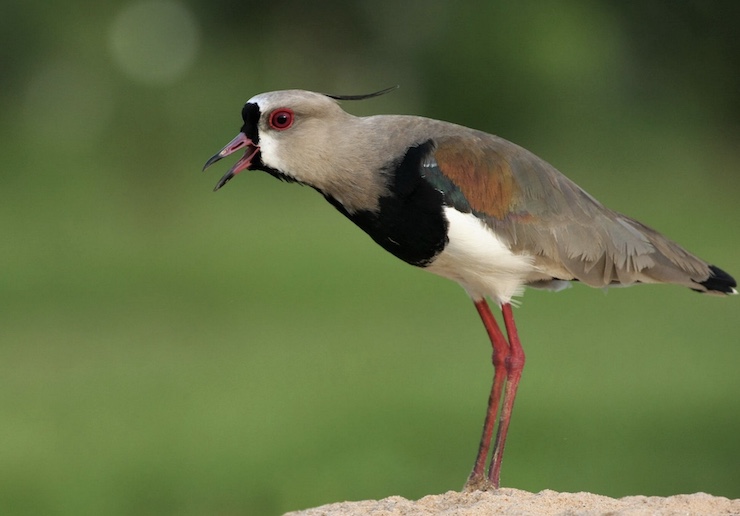Researchers In Europe Using Drones to Help Monitor The Declining Numbers of Bird Populations

As global human populations rise, many animal species begin to decline due to habitat competition. Farmland birds have become particularly threatened as intensive agriculture practices are implemented to meet the demands of human consumption. According to studies conducted by the European Commission, Europe has seen a 4% decline in common birds over the last decade. Over that same time span, Europe has seen a 17% decline in farmland birds. One such species is the Northern lapwing bird which has been labeled as Near Threatened by conservationists.
The Northern lapwing is about the size of a pigeon with a white breast and iridescent greyish-green feathers on its back. The lapwing has a distinctive whisp of feathers curling up from the crest of its head. Vastly migratory birds, they can be found throughout all of Europe. They make their nests in shallow ground scrapes around which they wade and scavenge for insects. During the breeding season, 3-4 eggs are laid. The eggs are incubated for about 4 weeks. When farmers begin to plow their fields, the nests of farmland birds like lapwings are destroyed. If the chicks have had enough time to mature, everyone flies away to build a new nest. If the nest and eggs are destroyed early on in the breeding season, the birds may have enough energy to lay a second round of eggs. However, in most cases, the nests are destroyed, and the chances for that year’s generation to hatch are gone.
A team of researchers from the Finnish Museum of Natural History Luomus, a branch of the University of Helsinki in Finland, began a study using drones to protect the nests of Northern lapwing birds that frequent Finnish farms as breeding grounds. The research was led by Helsinki Institute of Life Science (HiLIFE) postdoctoral student Andrea Santangeli who has dedicated his career to developing conservation models for birds. Andrea, with fellow HiLIFE postdoctoral student Edward Kluen, borrowed a thermal camera and a tripod. “Then we bought some eggs from the store,” Edward said, “put them in an incubator, and then placed them in the field just to see whether or not we could detect the nests on arable land using a thermal camera.”
The thermal camera was able to identify the heat signature of the eggs that Andrea and Edward placed in the field, but not as successfully as they had hoped. If there was any vegetation blocking the view of the camera, it could not detect the nests. This led the duo to the idea of using a drone with a thermal camera to search for the nests. From an aerial position, Andrea and Edward hypothesized that vegetation would not block the thermal sensor scanning for the eggs. Andrea and Edward turned to John Loehr, a research coordinator specializing in drone implementation from the University of Helsinki.
With John’s thermal camera equipped drone, the next step was to find a test site. With the help of some local bird spotters, the team was able to find an arable farm field with several Northern lapwing nests to perform their experiment. John sent the drone up to fly autonomously in a grid pattern over the site by inputting a predetermined course. It seemed that the drone was able to get the job done, but with one major problem. The drone had collected thousands of images, far too much for Andrea and Edward to comb through. So they turned to engineering students Raviteja Chirumamilla and Yuxuan Chen to develop an AI system to process all the data collected by the drones and pinpoint the locations of nests in the fields.
The team was able to prove that the drone, combined with the AI software, could successfully locate nests hidden in ground vegetation. Once the nests are located, GPS coordinates are used for a ground crew to go and relocate the nest. And while the adult lapwings become very agitated having their nests moved, they eventually calm down, hatch, and raise the chicks to maturity. “The conservation community must be ready to embrace technology and work across disciplines and sectors in order to seek efficient solutions,” Andrea said. “This is already happening, with drone technology becoming rapidly popular in conservation. A next and most challenging step will be to test our system in different environments and with different species. Our auspice is that this system will be, one day, fully integrated into agricultural practices, so that detecting and saving nests from mechanical destruction will become a fully automated part of food production.”
|